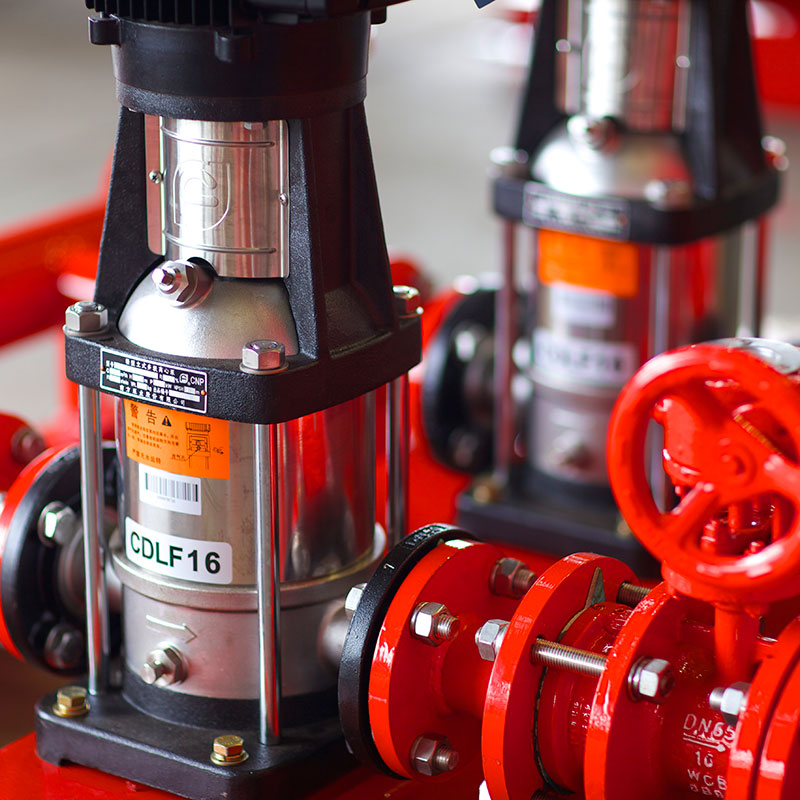
Created 20.04.2021
A critical part of your construction or facility is your fire suppression system. But, if your data, objects, and properties are essential or vital to your building, then a fire removal device that protects those assets and protects your employees and visitors can be challenging to ascertain.
It's nice to know that many fire removal methods have been built in accord with your facilities. The protection of buildings in which appliances and material loss are reduced focuses on both clean agent and fire pre-action control systems.
What is the best choice for your service, however?
Taking a peek at the variations between sprinkler systems and the pre-action method to evaluate the fire uninstall system you prefer:
Clean Agent vs. Fire Prevention Systems Pre-Action: what is the difference?
The key discrepancies between the clean agent and fire deletion systems are the deletion agent they use and how fast the systems work.
A clean fire removal system uses a clean fire remover. It is designed to suppress fire at its earliest primary stages until smoke or fire is observed. The use of a pure fire removal device removes the risk of harm to your construction equipment or properties. Special hazards systems are also identified as clean fire prevention systems. Notable system names such as the FM-200, 3M Novec 1230, and Ansul Inergen can also be recognized – three of the most popular cleaner systems currently on the market.
A fire-repellent system is used to suppress and extinguish a fire with a sprinkler system. In contrast to a traditional method of fire sprinklers, a pre-action system needs two occurrences.
- First, when a connected smoke detector, heat detector, and manual pull station are turned on, the pre-action valve is opened. Water can then be drawn into the pre-action system. But, until a second incident happens, the water will not be released.
- The sprinkler head heat element breaks down when the temperature reaches approx. 155-200°F, which means water can suppress fire fast and efficiently.
Although a fire prevention system still uses water, the requirement that these two measures take effect only when the fire threat is real. Moreover, the sprinklers are activated only in areas that reach this critical temperature. Sprinklers are not activated in areas where there is no fire hazard.
What are the advantages and disadvantages?
To help explain how each one of these solutions operates, we will delve into the benefits and drawbacks of each system to safeguard your facilities from fire threats while securing high-value and sensitive properties.
Clean agent fire removal systems:
Advantages :
Equipment or assets shall not be harmed. Clean agents are not harmful, and no trace leaves behind (learn more about cleaning agents). Electrically non-conductive and readily evaporative or gas-induced are efficient fire-suppression agents, ensuring that they do not interfere with running electrical machinery or destroy valuable commodities such as rare products.
- Fast, effective enhancement.
Fire removal systems with clean agents are designed to be run in their primary phases at an early stage. This minimizes fire risk, which is possible because the clean agent itself does not damage the land or damage the inhabitants.
- Pleasant to the community.
Inherently sterile agents are eco-friendly. They do not have the potential to lose ozone and do not release to the atmosphere hazardous or poisonous compounds.
To ensure that nobody's wellbeing is at risk should the device work, clean agents must be graded as no or low observed impact levels. And when a neat fire control device is triggered, the people in the building do not run a threat to their life.
Disadvantages :
- Accidental Acceleration potential.
Although a clean fire suppression device is supposed to avoid fires at the simple levels, there is a limited chance of injuries. Cross zoning, which takes two detectors to identify smoke before the machine turns on, can be combated.
Sprinkler devices for pre-action fire suppression :
Advantages :
- Fragile Accidental Actuation Potential.
It is difficult to trigger pre-action fire suppression devices by mistake or false warning. Because two separate events are necessary to activate, you can almost not act without a fire threat.
- Efficient fire risks below simple levels.
Fire suppression pre-action systems are designed to suppress and extinct fires that have reached their fundamental stages. It is a compelling way of eliminating flames.
- Only in places where fire threat is present.
Owing to the triggering of sprinkler heads at a specific temperature, a pre-action-fire prevention device only works in places where there is a fire danger. It, therefore, minimizes risk in other areas in your building.
Disadvantages :
- Will continue to cause property or machinery harm.
In actual fire danger, water sprinklers will also inflict harm to the premises or appliances, the main downside to the pre-action fire suppression system. This damage can be catastrophic in applications where data centers, museums, and hospitals are vital.
- Fire hazard reaction slower.
Since two events are needed to activate a pre-action fire suppression device, it has more downtime than a clean agent system. This means that before the device responds, there will be more fire damage to the house.
What is the great thing about my installation?
Generally speaking, a clean agent device is the safest solution because it has high-value or project vital properties. While pre-action systems are compelling, they destroy the building with water. A clean agent device will act quickly, suppress an early fire, protect the building from more significant harm, and not risk the high-value properties.
If your facility seeks an efficient fire deleting device and asset security is not critical, you might want a pre-action sprinkler system. These systems have efficient protection and will not operate until a fire hazard threat is actual.
